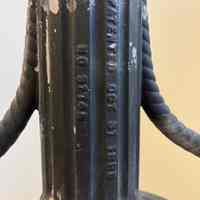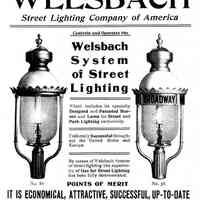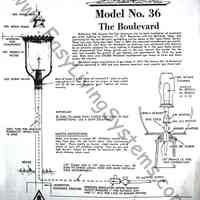Welsbach Gas Street Lamp

2024.04.64
The modern gas mantle was patented by Austrian Carl Auer von Welsbach in 1885. After the chemical formulation was perfected in 1892, the gas mantle became an important source of lighting until the introduction of electric lights in the early 1900s.
Winthers, Sally
30 in
18 in
Sec 5E Shelf S6
In the 1880s, Austrian chemist Carl Auer von Welsbach (1858-1929) created fabric impregnated with thorium and cerium, which glowed incandescently when heated by burning gas. Mantels for gas lamps were the first industrial product to use rare earth elements, and led to an international trade in rare earth ores, especially monazite. Welsbach managed firms around the world that sold gas lamps for lighting streets, homes and businesses, which shaped the visual landscapes that millions of people inhabited from the 1890s into the 1930s. In the United States, the Welsbach Incandescent Gas Lighting Company had offices on Walnut Street in Philadelphia, and a factory on the Delaware River at Gloucester, New Jersey. Many of the factory workers were women, who sewed the fabric mantels and packed the mantels into packages for sale across the country. Source: https://digital.sciencehistory.org/works/hliewun
08/12/2024
08/16/2024





